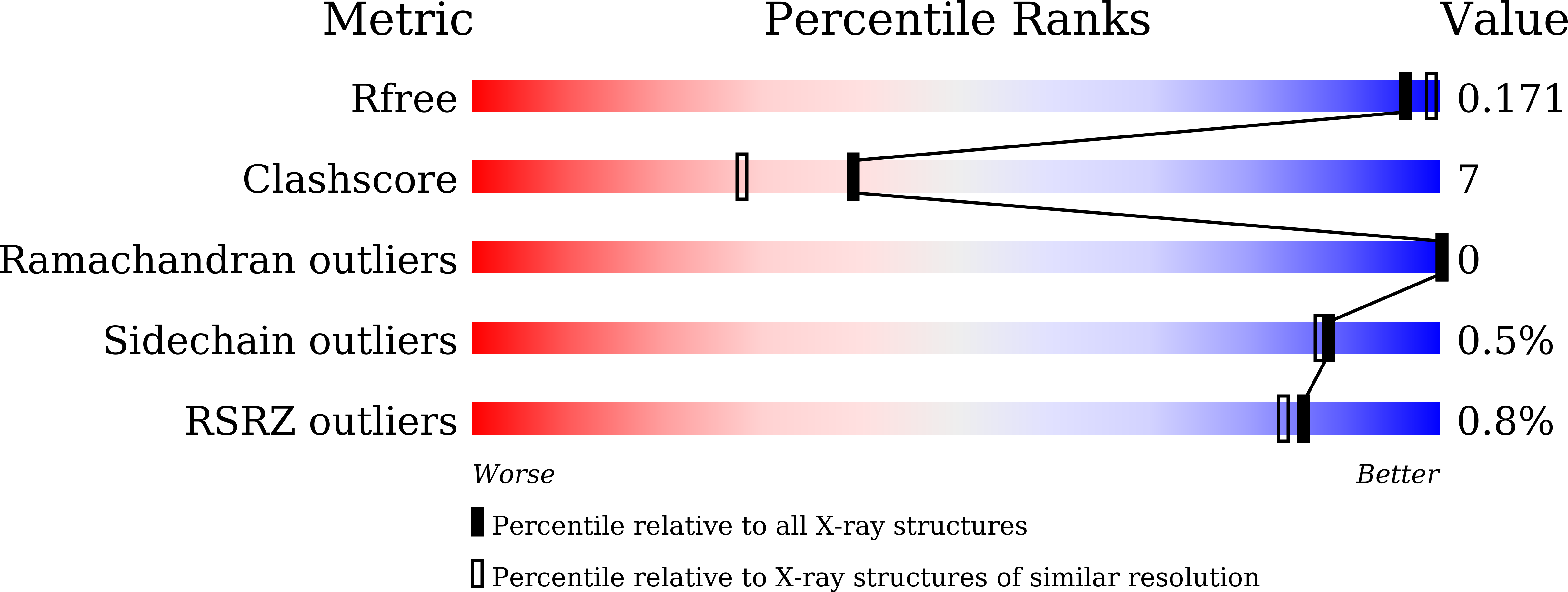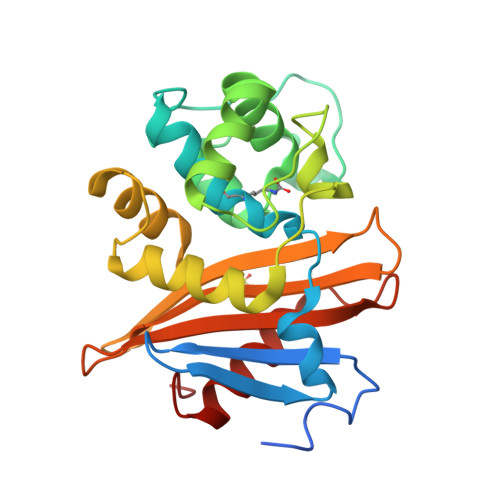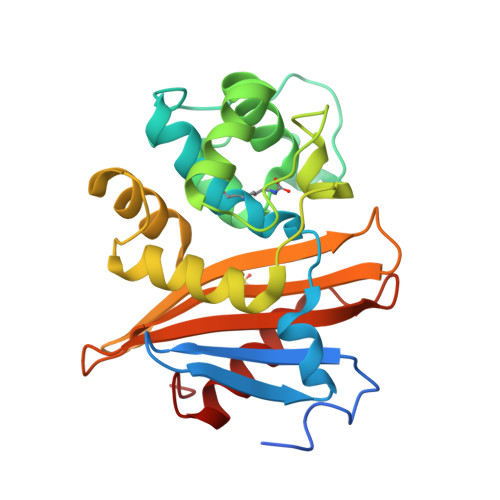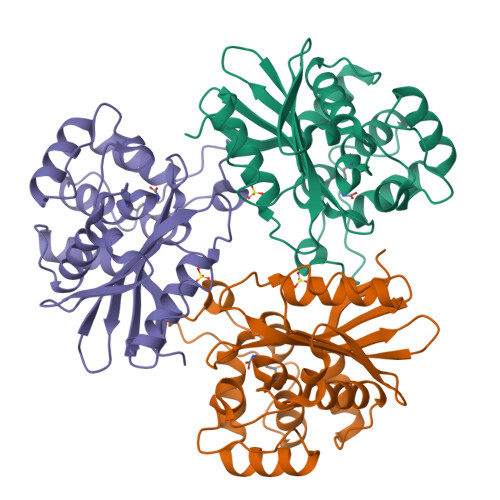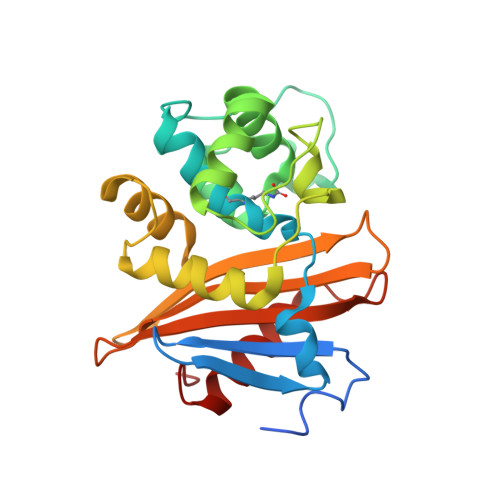Crystal Structure of OXA-58 with the Substrate-Binding Cleft in a Closed State: Insights into the Mobility and Stability of the OXA-58 Structure
Saino, H., Sugiyabu, T., Ueno, G., Yamamoto, M., Ishii, Y., Miyano, M.(2015) PLoS One 10: e0145869-e0145869
- PubMed: 26701320
- DOI: https://doi.org/10.1371/journal.pone.0145869
- Primary Citation of Related Structures:
5BOH - PubMed Abstract:
OXA-58 is a class D β-lactamase from the multi-drug resistant Acinetobacter baumannii. We determined the crystal structure of OXA-58 in a novel crystal, and revealed the structure of the substrate-binding cleft in a closed state, distinct from a previously reported OXA-58 crystal structure with the binding cleft in an open state. In the closed state, the movement of three loops (α3-α4, β6-β7, and β8-α10) forms an arch-like architecture over the binding cleft through interaction between the Phe113 residues of α3-α4 and Met225 of β6-β7. This structure suggests the involvement of these flexible loops in OXA-58 substrate binding. In contrast to the mobile loops, the Ω-loop appeared static, including the conserved loop residues and their hydrogen bonds; the pivotal residue Trp169 within the Ω-loop, ζ-carbamic acid of the modified base catalyst residue Lys86, and nucleophilic residue Ser83. The stability of OXA-58 was enhanced concomitant with an increase in the hydrolytic activity catalyzed by NaHCO3-dependent ζ-carbamic acid formation, with an EC50 of 0.34 mM. The W169A mutant enzyme was significantly thermally unstable even in the presence of 100 mM NaHCO3, whereas the S83A mutant was stabilized with NaHCO3-dependent activation. The ζ-carbamic acid was shown to increase not only OXA-58 hydrolytic activity but also OXA-58 stability through the formation of a hydrogen bond network connected to the Ω-loop with Ser83 and Trp169. Thus, the static Ω-loop is important for OXA-58 stability, whereas the mobile loops of the substrate-binding cleft form the basis for accommodation of the various substituents of β-lactam backbone.
Organizational Affiliation:
Department of Chemistry and Biological Science, College of Science and Engineering, Aoyama Gakuin University, Sagamihara-shi, Kanagawa, Japan.







